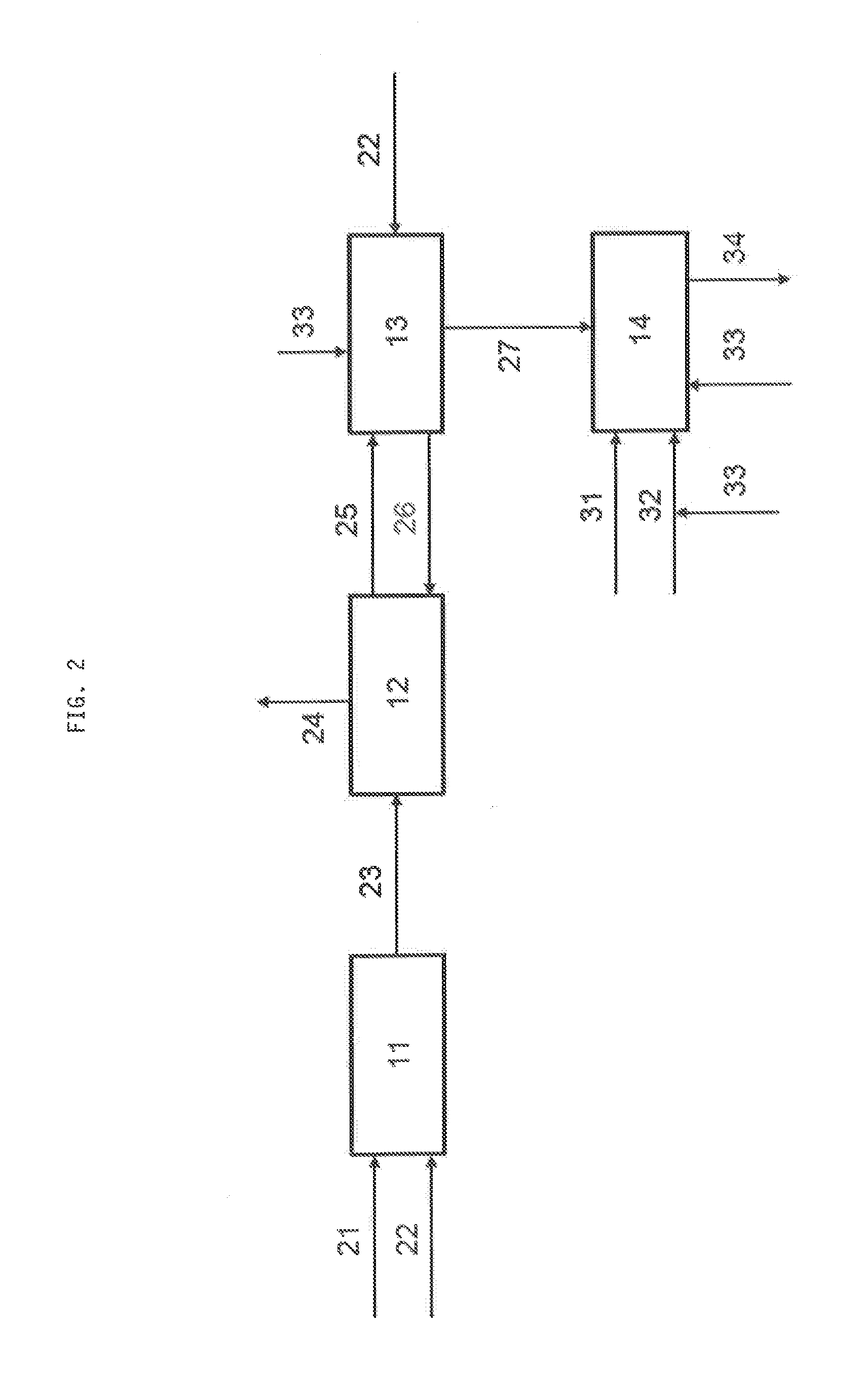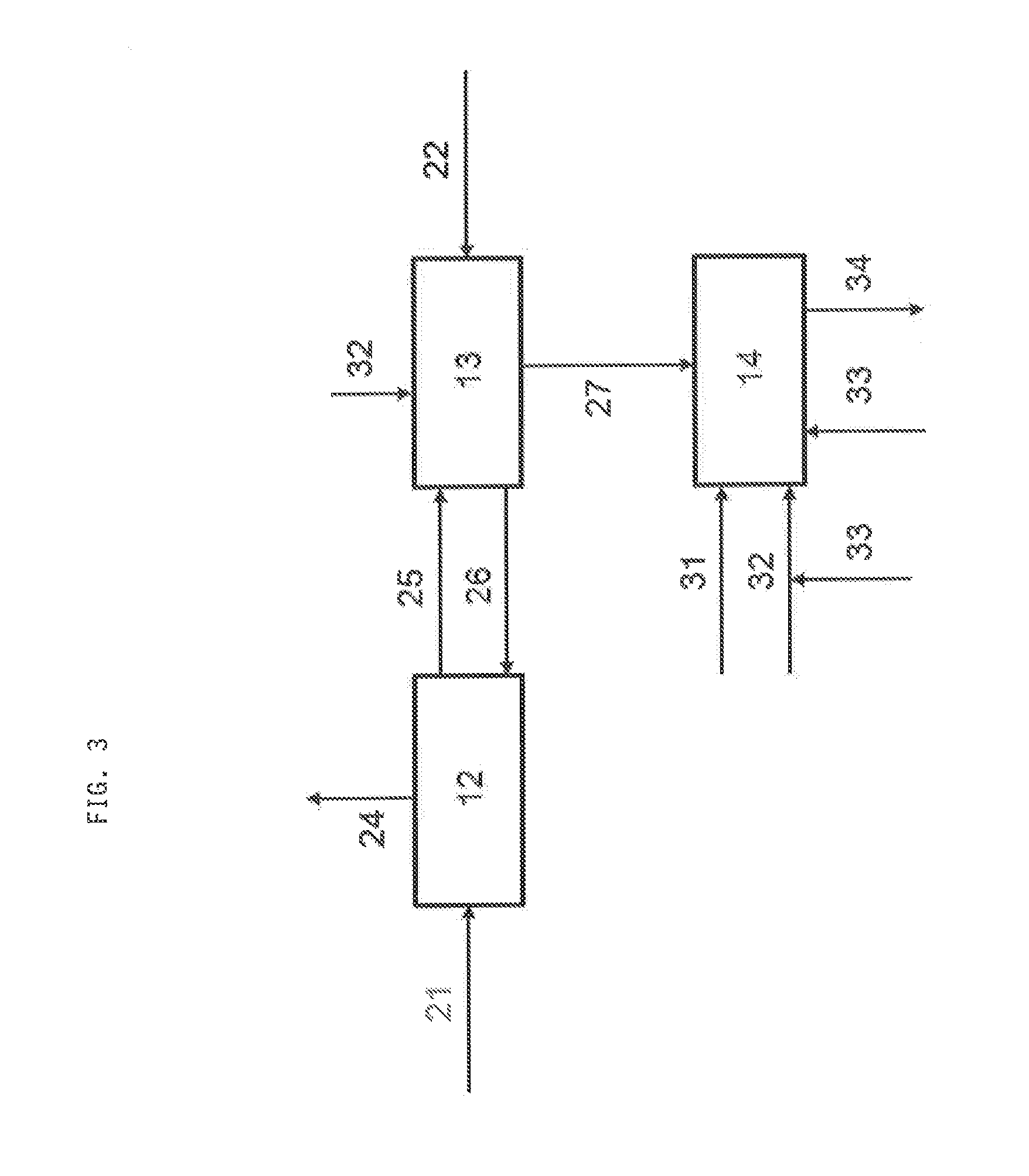Sulfur removal methods
a technology of sulphur removal and fluid, applied in the direction of sulfur preparation/purification, sulfur compounds, separation processes, etc., can solve the problems of reducing sulphur recovery efficiency, reducing sulphur quality, and reducing the fouling/deactivation of catalysts, so as to prevent fouling or deactivation of catalysts
- Summary
- Abstract
- Description
- Claims
- Application Information
AI Technical Summary
Benefits of technology
Problems solved by technology
Method used
Image
Examples
example 1
[0048]In oil refineries a new process for deep desulphurisation of hydrocarbon streams 21 containing S-bearing molecules made its entrance within the last years. This process (also denoted as S-Zorb), based on reductive adsorption 12 of sulphur on a solid 26, leads—by oxidative regeneration 13 of the loaded adsorbent 25 by air 32 oxidation—to an off-gas 27 comprising an appreciable but not dominating amount of SO2 (e.g. 5 vol.-%). A detailed description of said S-Zorb process can be found in Song et al., Applied Catalysis B: Environmental 41 (2003), pages 207-238.
[0049]One way of getting rid of this waste stream 27 is to send it into a Claus unit (or Claus process) 14, wherein all the components of this waste stream are present (N2, O2, CO, CO2, arenes, hydrocarbons) respectively are produced within the Claus furnace (SO2, H2, CO, CO2).
[0050]In case above mentioned waste stream is fed into the Claus unit 14 it has to be assumed that the temperature in the Claus furnace may drop cons...
example 2
[0062]This concept not only holds for waste streams coming from the S-Zorb process mostly applied within oil refineries. For gasification schemes an adsorptive process is already highly developed in order to realize hot gas desulphurisation. Here, also a waste gas is produced in the adsorbent regeneration step, which can be sent into a Claus unit. Here, again, the combination with oxygen application is an elegant solution; getting rid of SO2 by recovering the sulphur. Also the sulphur removal of other gas streams such as natural gas is a source for sulphur dioxide rich waste streams, which can be processed as described above.
[0063]In case of a hydrocarbon stream such as natural gas or another gas stream such as raw synthesis gas already comprises hydrogen sulphide, the stream (21) is directly contacted with the adsorbent (FIG. 3) without any work-up. Again, adsorption 12, regeneration 13 and feeding the resulting off-gas stream 27 to the Claus unit 14 is performed analogously to the...
PUM
| Property | Measurement | Unit |
|---|---|---|
| Temperature | aaaaa | aaaaa |
| Temperature | aaaaa | aaaaa |
| Temperature | aaaaa | aaaaa |
Abstract
Description
Claims
Application Information
 Login to View More
Login to View More - R&D
- Intellectual Property
- Life Sciences
- Materials
- Tech Scout
- Unparalleled Data Quality
- Higher Quality Content
- 60% Fewer Hallucinations
Browse by: Latest US Patents, China's latest patents, Technical Efficacy Thesaurus, Application Domain, Technology Topic, Popular Technical Reports.
© 2025 PatSnap. All rights reserved.Legal|Privacy policy|Modern Slavery Act Transparency Statement|Sitemap|About US| Contact US: help@patsnap.com



